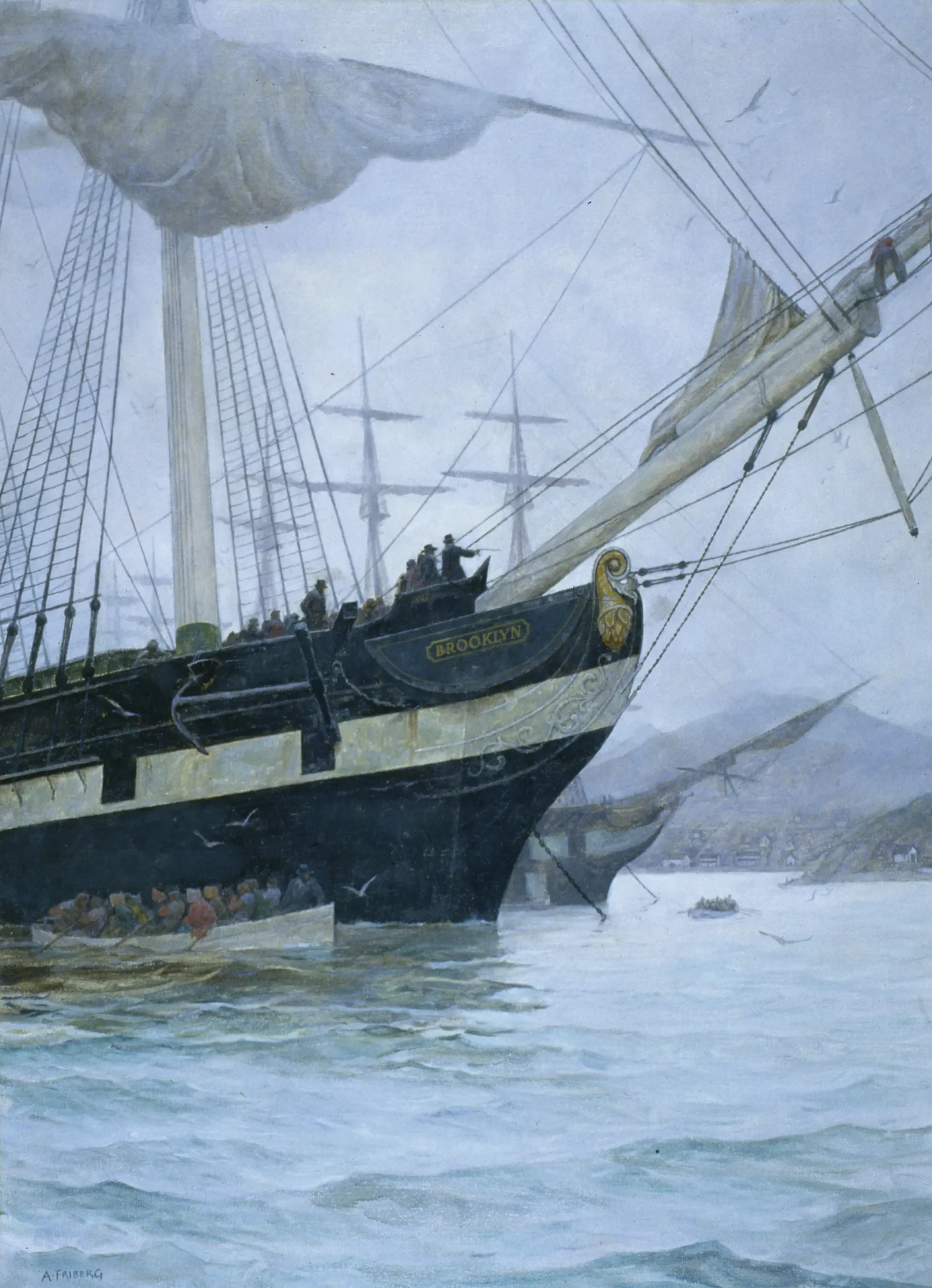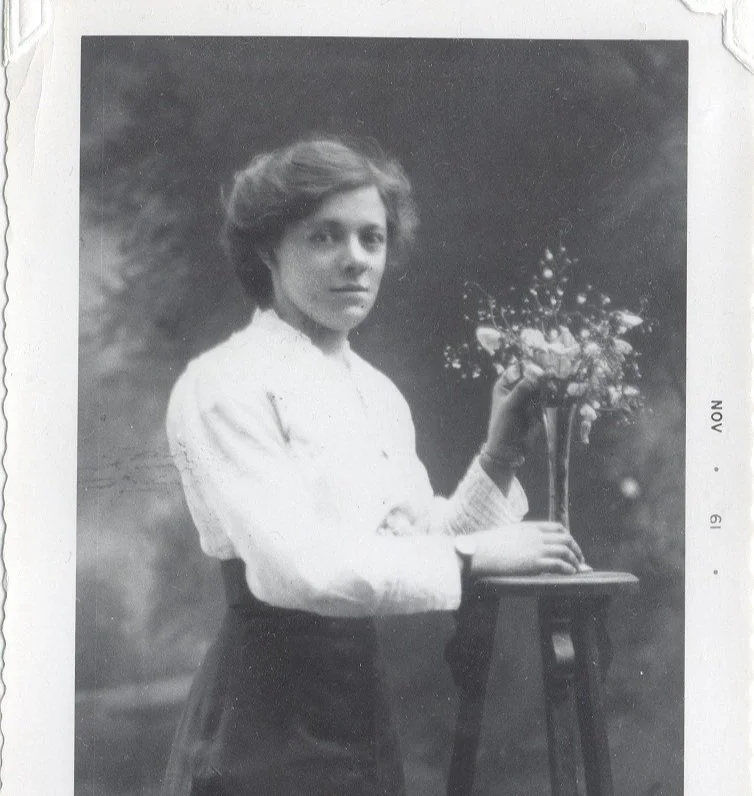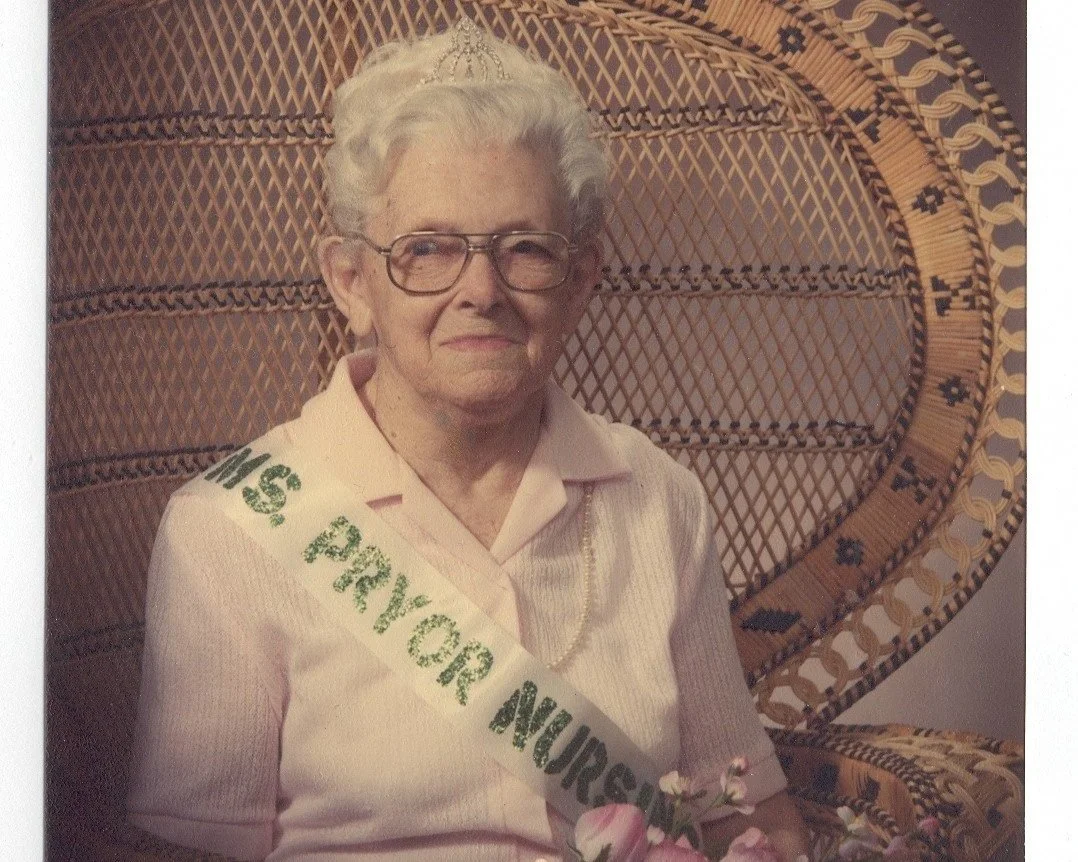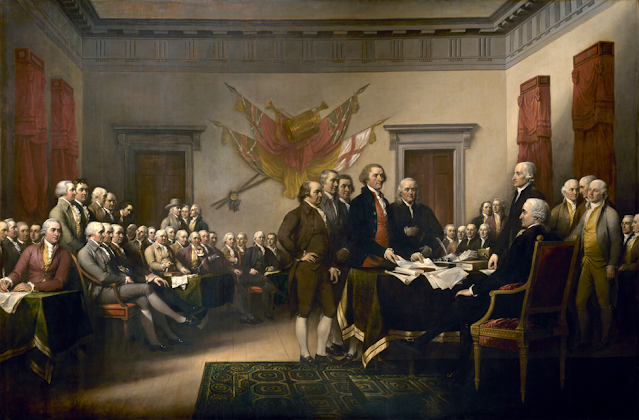Dissertation Preview - The Forgotten Pioneers: Latter-day Saints from the Ship ‘Brooklyn’
Pioneers Arrive by Ship in San Francisco Bay (Ship Brooklyn) by Arnold Friberg.
In 1846, seeking refuge from intense persecution in the United States, a small group of Latter-day Saints boarded the ship Brooklyn in pursuit of a new California-based Zion. While they could not have foreseen the formative impact their pioneering journey would have on California—nor how quickly it would be forgotten—this research seeks to recover their story and situate it in the broader context of Latter-day Saint and regional history.
The thesis is that the 1846 arrival of Latter-day Saint pioneers from the ship Brooklyn to California had a significant impact on the early development and colonization of the San Francisco Bay Area during the mid-1800s. Thesis-driven research questions center around the Saints’ impact on prioritizing public education, contributing to the development of several settlements, enabling rapid advancements in inter- and intra-area connections and communication, making mixed contributions to the reputation of their Church in California, and helping to redefine what it meant to be Californian in the mid-1800s. The research seeks to identify how they were able to make such an impact and the lasting effects of their time in California. To narrow the project’s scope and allow for a more comprehensive analysis of the principal causative forces and their consequences, the research highlights the influence of specific individuals and families, including Samuel Brannan, William Glover, John Horner, and Augusta Crocheron.
Mr. Horner, The Greatest Farmer in California, drawing, in Gleason’s Pictorial Drawing-Room Companion, Sept. 16, 1854, 164.
This research is historically significant because it reveals a largely forgotten aspect of Latter-day Saint pioneer history as it intersects with western migration and early California history. It helps to overcome the historiographical problem that most people do not know that any Saints traveled west by sea, that their arrival in California predated the main body of church members reaching Utah territory, or the role that they played in the pioneering work of the mid-nineteenth century. Additionally, their story is difficult to find in church-sponsored collections of pioneer stories, further limiting widespread familiarity with their story. The California Gold Rush—which occurred shortly after the Brooklyn’s arrival—often overshadows the Saints’ early efforts to develop the San Francisco Bay Area. By analyzing examples of lived religion, entrepreneurship, innovation, cultural integration, contested governance, violence, and economic instability, this research demonstrates the Brooklyn Saints’ impact on the early development of the Bay Area.
The research’s main historiographical fault lines center on changing attitudes—both within and outside the Church—toward the Brooklyn Saints’ role in the development of the San Francisco Bay Area in the mid-nineteenth century. Early non-Latter-day Saint writers praised their contributions without overemphasizing their leader, Sam Brannan. By the early twentieth century, revisionists painted Brannan as the principal pioneer and downplayed the other Saints’ contributions. Latter-day Saint interpretations, on the other hand, change from seeing the Brooklyn Saints as pioneers, to faithless non-pioneers, to something in between. Despite oscillating historical opinions both within and outside the Church, acknowledgment of the Brooklyn Saints’ contributions is largely absent from both contemporary scholarly discussion and public memory.
To that end, this study employs multiple methodologies including traditional documentary analysis, the microhistory of specific Saints, quantitative analysis of the Saints’ resources, comparative economic history of San Francisco over time, migration history relative to borderland theory and the changing identity of Californians, and religious history—especially as it relates to the Saints’ religious impact in California. To ensure that the findings are grounded in extant firsthand documentation, the principal evidence for this research is a wide array of primary source documents including memoirs, exploration reports of California, shipping manifests, newspaper articles, personal correspondence, speeches, and meeting notes. To support the thesis, provide substantive analysis, and situate arguments in their broader scholarly context, secondary sources include regional histories, official histories of the Church, and scholarly analyses of the period.
Horner School House, photograph, approximately 1850, Alameda County, California, in Our Pioneer Heritage, by Kate B. Carter, 3:511.
This research builds on the author’s previous graduate-level work examining the intersection of migration and Latter-day Saint history in the mid-nineteenth-century American West. The author has a master’s degree in history and is currently completing his doctoral degree in history, both of which sharpen his skills in historical research, source criticism, objective analysis, and historiographical assessment. Moreover, the author has extensive experience researching and teaching Latter-day Saint history.
While the Bay Area was not the final destination for many of the Brooklyn Saints, their impact on its founding paved the way for dramatic growth over the coming decades, both within their church and among the general population. This research is relevant not only to current members of the Church of Jesus Christ of Latter-day Saints, but also to anyone interested in the history and early development of California. While the historiography of the Brooklyn Saints has changed dramatically over time, even the most recent scholarly publications on the group do not give them much attention in the context of pioneers. Consequently, this targeted research about the Brooklyn Saints’ impact on the development of the San Francisco Bay Area in the mid-nineteenth century is both warranted and necessary.
John P. Harris: Cofounder of the Nickelodeon Era
It all begins with an idea.
Politician and entrepreneur John Paul Harris had a storied career, in no small part due to his helping found the Nickelodeon Era of early twentieth century America. This research describes and assesses Harris’s role in the development of the film industry using qualitative indicators such as first-person accounts, extant trade publications, and secondary academic sources. Harris was born in 1871 to a family already involved in the entertainment industry, with his father being a vaudeville producer. While his father had shown films in the late 1900s, they were always a secondary act to his vaudeville productions, not the primary reason audiences came to the show. Harris, and his brother-in-law Harry Davis, are credited as the first ones to open a theater dedicated to showing films when they started their original “Nickelodeon” theater “on Smithfield Street in Pittsburgh on June 19 ,1905.”[1] As evidence of the industry’s growth, by the time of his death, Harris’s company operated “sixty theaters throughout seven states.”[2]
Research Methodology
This research uses historical first-hand accounts from Harris’s contemporaries as they describe his actions and legacy. It will also include descriptions from extant trade publications of the nickelodeon trend on the budding film exhibition industry. Lastly, some secondary academic sources will be included to provide context and perspective. The information is all accessible online through databases such as Internet Archive, archives of the Pittsburgh Post-Gazette, and documents from The Historical Society of Western Pennsylvania. Comparative analysis will be used to assess both the qualitative and narrative information available. There are no apparent ethical concerns other than the relentless pursuit of objective analysis. The limitations to consider are that financial data of these early theaters is difficult to find, so qualitative analysis will have to suffice.
Findings & Analysis
Like other early theatrical entrepreneurs, Harris’s ingenuity, investment, and ability to identify market signals regarding the potential and popularity of inexpensive, available, and entertaining motion-picture theaters quite literally helped create the demand for higher quality productions, better equipment, and more modern theaters. While the so-called ‘Golden Age of Cinema,’ often designated as the 1920s to the 1960s, is usually the earliest cinema that contemporary audiences remember, if Harris and the nickelodeons had not helped create demand, advance technology, and cultivate more quality productions, the Golden Age would likely have taken longer to get started or never come at all. Moreover, nickelodeons’ affordable prices, convenient locations, and frequent twenty-minute shows throughout the day also helped increase the diversity of the audience members. As an example of increasingly diverse audiences, a 1911 trade magazine called The Nickelodeon described how some business owners in this era began to set up their own nickelodeons near their farms or fields as a benefit or means of attracting laborers to come work for them.[3] Unlike potentially expensive, exclusive live theatrical productions, the poor, the ethnic minorities, and the uneducated were able to experience the magic of moviegoing. This also meant there was more demand for films, which led to increased production from the studios.
As one of the primary entrepreneurs of the nickelodeon era, many of his contemporaries, and those who came after, felt that John Harris’s contributions warranted remembrance. As evidence of his impact on the community and the film industry, within approximately three years of his passing in 1926, the Harris Memorial Theatre was founded on 210 Fifth Avenue in McKeesport, Pennsylvania.[4] This theater would operate in various forms for another forty years and serve as a reminder of Harris’s contributions to the industry. Additionally, also in 1929, members of the community installed a historical marker near the site of Harris’s first nickelodeon to commemorate the man and his legacy.[5] A June 1929 article in the Pittsburgh Post Gazette describing the event noted that “thousands of persons crowded Smithfield street … to witness the unveiling.”[6] Moreover, prestigious community leaders and speakers who participated included the mayor, the president of The Historical Society of Western Pennsylvania, the former head of the local vaudeville circuit, and former governor and current secretary of the Motion Picture Producers of America, Carl Milliken.[7] The article notes that they all “joined in lauding Senator Harris for his foresight in appreciating the importance of the young industry.”[8] The tablet credits Harris for opening “the world’s first all motion picture theatre the Nickelodeon” and claims that “this was the beginning of the motion picture theatre industry.”[9]
Historical Society President William H. Stevens’ comments at the 1929 unveiling of Harris’s historical marker describe how he had helped the theater business grow from simple nickelodeons across the eastern United States to “the beautiful and commodious million dollar movie palaces of today [1929].”[10] These larger theaters were constructed, in part, due to government regulation prescribing the maximum number of occupants and seating arrangements permitted in nickelodeons.[11] The motion picture theater industry may have been an exception to Gabriel Kolko’s claim that successful businesses of this era generally sought regulation and political allies to protect themselves from competition.[12] If anything, those in the early film industry seem to have been frustrated by government regulation as it pushed them away from profitable, low-cost nickelodeons, though it did help advance the industry standard for movie exhibition to the next level. Despite being in the birthplace of the nickelodeon, known for its eponymous nickel admission price, this next generation of Pittsburgh theaters would charge as much as “ten and twenty cents a show.”[13]
Conclusion
Stevens’ comments at the 1929 unveiling of Harris’s historical marker aptly summarize Harris’s contributions to his community and the film industry at large. Stevens notes that while Harris’s first nickelodeon was simply a “rented store room” in which he placed “ninety-six chairs” and “one of those early crude projectors,” it helped to kick off a booming industry.[14] In its own way, the nickelodeon craze that Harris founded helped to increase the availability of cinema, attract a more diverse audience, and unite Americans through shared theatrical experiences.
Footnotes
[1] Bartels, Elizabeth, “More Than Your Nickel’s Worth: The Nickelodeon,” Pennsylvania Center for the Book, Spring 2010.
[2] William H. Stevenson, “Address of William H. Stevenson at the Unveiling of Harris Memorial Tablet,” Western Pennsylvania Historical Magazine 12, no. 4, October, 1929, 209.
[3] “Motion Pictures for Hop Field Laborers,” The Nickelodeon, January 7, 1911, in The Nickelodeon (Jan-Mar 1911) 5, no. 1.
[4] “John P. Harris Memorial Theatre,” Cinema Treasures, accessed November 15, 2023, https://cinematreasures.org/theaters/9466.
[5] “Harris Memorial Tablet,” dedicated by The Historical Society of Western Pennsylvania, June 1929, Pittsburgh, Pennsylvania.
[6] “Thousands Honor Founder of First Nickelodeon,” Pittsburgh Post Gazette, June 20, 1929.
[7] Ibid.
[8] Ibid.
[9] “Harris Memorial Tablet,” 1929.
[10] Ibid., 208.
[11] “Pennsylvania’s Absurd Law,” The Nickelodeon, January 28, 1911, in The Nickelodeon (Jan-Mar 1911) 5, no. 4.
[12] Robert L. Bradley Jr. and Roger Donway, "Reconsidering Gabriel Kolko: A Half-Century Perspective," The Independent Review 17, no. 4 (Spring, 2013): 561.
[13] Michael G. Aronson, “The Wrong Kind of Nickel Madness: Pricing Problems for Pittsburgh Nickelodeons,” Cinema Journal 42, no. 1 (2002): 72, http://www.jstor.org/stable/1225543.
[14] Stevenson, “Address …”, 207.
Sarah Selina Dolloway: Stubbornly Successful Despite Adversity
Sarah Selina Dolloway, known throughout her life as 'Lena,' is my paternal great grandmother and a woman of remarkable courage, fortitude, and determination. For the benefit of her descendants, and anyone else in need of inspiration, I will briefly describe her life, including a difficult childhood, adventures in America, and ample measure of loss, love, and laughter.
Challenging Childhood
Lena was born on May 19, 1892 in London, England.1 She had many interesting stories about being a child in that place and time but one will suffice for now. In that era, it was common for adults to "drink beer with their meals," and the children were usually the ones sent to go get the beer for their parents.2 As such, Lena said that often "there would be a line-up of children waiting to get their buckets full of beer."3 Both her parents died by the time Lena was 10 years old, leaving her in the custody of her stepfather and new stepmother. As a result, she moved around to several different homes including those of her Uncle Jack, Uncle Fred, and even a neighbor lady with whom she got along well.4 In short, her early years were tumultuous and far from an ideal family setting.
Adventures in America
Given her difficult upbringing, it should serve as little surprise that, when she had an opportunity to travel to the United States and live with her uncle for a year (or so she thought), she capitalized on it. So it was that at the tender age of 22, this young girl who "had never been further" than the London metropolis, boarded the SS St. Louis and traveled across the Atlantic Ocean.5 Upon arriving at Ellis Island, she was surprised to discover that not only was her uncle not there to pick her up, but that she still had to cross nearly the entire United States by train to get to Salt Lake City, and then by wagon to arrive in Ely, Nevada.6 To make a long story short, she persevered and ultimately arrived safe and sound in mid-1914. The following year, she met and fell in love with an American named Reuben Hugh Bates and they were married on September 12, 1915.7
Loss, Love, and Laughter
Lena and Reuben would live happily together for many years. Reuben always knew how to push his wife's buttons and would occasionally "tease her about her cooking or remind her that the Yankees whipped the 'Johnny Bulls' in the [American] Revolutionary War."8
Together, they raised their eight children, weathered the storms of the Great Depression (including food scarcity, job loss, and relocating their family), World War II (in which three of their sons and one of their sons-in-law were in the military), and overcame medical challenges, such as Lena's goiter surgery.9 Ultimately, though, Reuben passed away in 1958, leaving Lena to live the remainder of her days, an additional 33 years, as a widow surrounded by her loved ones.10 Though she came from a less than ideal family background, with her husband and children, she managed to create a loving family of her own that was worthy of emulation.
Stubbornly Successful Despite Adversity
According to her grandchildren, Grandmother was simply not ticklish because "she refused to be."11 As she tickled them, she would say, it was "all about mind over matter."12 While that is a silly and simple example, it serves as a microcosm of her determination to not let life or circumstances dictate her response or her happiness. She lived through the loss of both parents in her childhood, immigrated to the United States alone, experienced the Great Depression, suffered the loss of her sweetheart Reuben, and many other hardships, and yet she retained her sense of humor, love of country, and work ethic. May it be so well spoken of us.
Footnotes:
1 Jefferson Thomas Bates, "Sarah Selina Dolloway," in Ancestry of Reece A. Bates, Personal Library of Justin Bates.
2 Ibid.
3 Ibid.
4 Ibid.
5 Ibid.
6 Ibid.
7 ———, "Reuben Hugh Bates," in Ancestry of Reece A. Bates, Personal Library of Justin Bates.
8 Ibid.
9 Bates, "Sarah Selina Dolloway."
10 Ibid.
11 "A Memory from the Reece Bates Children," in Ancestry of Reece A. Bates, Personal Library of Justin Bates.
12 Ibid.
2 Major Ways the Bible Motivated the American Revolution
In the last few decades, it has become popular to deemphasize the influence of the Bible on the American Revolution. Proponents of this theory sometimes argue that the Founding Fathers were simply rationally motivated by their own economic self-interest. Contrary to popular belief, this research suggests two main ways that the Bible influenced the colonists' decision to seek their independence: first, the Bible was a major cultural influence that informed the colonists' identity and justified their growing desire to rebel; second, the Founding Fathers and other social leaders consistently utilized biblical themes and citations as tools in their efforts to stoke the colonial coals of indignation and promote independence from Great Britain.
The Bible as a Major Cultural Influence
Americans in this era, including the Founding Fathers, not only read the Bible, but were born and bred in a richly biblical cultural soil. As if to dispel all question, historian Daniel Dreisbach in his 2017 Reading the Bible with the Founding Fathers emphatically states that "the American founders read the Bible."¹ This was, in part, because it was foundational in the pre-war colonial culture in which they lived. In even the most fundamental ways, it influenced their language, ideas, behavior and public discourse. Dreisbach explained that this revolutionary era of Americans "was sufficiently biblically literate that many would have known a quote, paraphrase, or allusion was biblical in origin even without quotation marks or explicit attribution."²
Contrary to those in favor of a more economic or rationalist interpretation, noted biblical scholar Andrew Skinner, concluded that, "images and even language drawn from the pages of the Hebrew Bible were at least as powerful a force in shaping the new nation as John Locke or Thomas Paine."³ For example, it informed their view of themselves as God's chosen people. Like the enslaved Israelites, who God ultimately delivered, the Americans saw themselves as divinely destined for freedom from their tyrannical oppressors.
The Bible as a Tool for Stoking the Fires of Independence
The Founding Fathers weaponized the Bible in their efforts to stoke the colonial coals of indignation and promote Independence from Great Britain. Donald Lutz, who performed a survey of American political literature, including that of the Founding Fathers, noted that their political discourses were filled with biblical themes, allusions and citations.⁴ Lutz adds that a comprehensive assessment of "the political literature of the war years" makes it quite apparent the "extent to which biblical sources used by ministers and traditional Whigs undergirded the justification for the break with Britain" and "the rationale for continuing the war."⁵
In his 2010 work, God of Liberty, Thomas Kidd explains how, in addition to economical and ethical considerations, the colonists invoked a religious rationale for first rebelling and ultimately breaking with their mother country.⁶ Kidd states that, "Tyranny was not just political; it was religious" and sprouted from "the same malignant root: the spirit of popery and arbitrary power."⁷ Colonial preacher Johnathan Mayhew used the Biblical prophet Samuel as a template of true patriotism for colonists to follow; specifically, that Samuel recognized the wickedness of King Saul, and, as "a true patriot, zealous for the liberties and intere[s]ts of his country" recognized when his king's "behaviour became intolerable; and anointed a far better man to reign in his [s]tead."⁸
Dreisbach states emphatically that the "founders who fought for and secured independence from Great Britain" not only "read the Bible" but they also "incorporated it into their political discourse."⁹ Ultimately, they would also weave biblical principles and confidence into the nation's founding documents, The Declaration of Independence and the Constitution, as well as rituals, including George Washington taking the Presidential Oath of Office with his hand on the Bible.
Conclusion
While rationalism and economics clearly contributed to the colonists' decision to break with Great Britain, it would be a mistake to discount the influence of the Bible. Colonial advocates for independence, especially the Founding Fathers, knew the Bible and employed it extensively in their efforts toward independence and founding a new nation. They not only read it, but were surrounded by a culture saturated in biblical understanding and confidence.
Furthermore, they clearly and consistently utilized biblical themes and citations in their efforts to stoke the colonial coals of indignation and promote independence from Great Britain. Perhaps Dreisbach said it best when he noted, "The detachment of American history from its generative biblical culture impoverishes our understanding of the American experiment in self-government."¹⁰
Footnotes:
1 Daniel L. Dreisbach, Reading the Bible with the Founding Fathers, (New York: Oxford University Press, 2017), 1.
2 Ibid., 21.
3 Andrew C. Skinner, “The Influence of the Hebrew Bible on the Founders of the American Republic," in Sacred Text, Secular Times: The Hebrew Bible in the Modern World, ed. Leonard Jay Greenspoon and Bryan F. LeBeau, 13–34, (Omaha, NE: Creighton University Press, 2000), 31.
4 Donald S. Lutz, The Origins of the American Constitution, (Baton Rouge: Louisiana State University Press, 1988), 136.
5 Ibid., 142.
6 Thomas S. Kidd, God of Liberty: A Religious History of the American Revolution, (New York: Basic Books, 2010), 5.
7 Ibid.
8 Jonathan Mayhew, A Discourse Occasioned by the Death of the Honourable Stephen Sewall, (Boston, Massachusetts: Richard Draper, 1760), 16, Sabin Americana: History of the Americas, 1500-1926, link.gale.com/apps/doc/CY0100651324/SABN?u=vic_liberty&sid=bookmark-SABN&xid=20446b81&pg=1. Accessed 3 Feb. 2024.
9 Dreisbach, Reading the Bible, 1.
10 Ibid., 9.















